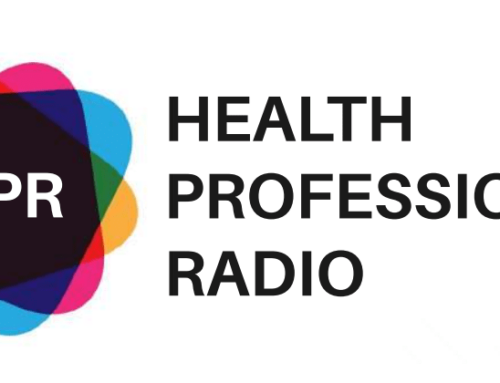
EMS, the Fire Service, 911 communications centers, what do each of these emergency service specialties have in common? What is the one thing that is routinely overlooked by a majority of agencies? It is of course service.
We are all in the service business.
My objective in this article is to make you think, to challenge your comfort levels and to help you develop a system to turn customers into clients. Throughout my 30+ year career as an EMS professional and a consultant I have found that this process takes hard work, dedication and consistent effort but the rewards are great.
Some un-enlightened EMS leaders will not understand and will not grasp the subtle but important difference between customers and clients. In fact, many of our colleagues have yet to embrace the fact that they are even in a service business.
In the beginning the public simply called and we came. Contracts with municipalities and healthcare facilities were simple, if we had them at all. We collected subsidies, stipends or donations from our communities. We did our job and that was enough. It is not nearly enough any more.
Response times, standards of practice, playing a very active role in the community, developing strong relationships with the local governmental agencies, mandatory system reporting, dealing with new privacy and other federal compliance regulations are just the starting point for the expectations placed upon us. And that was pre 9/11. Now the roles and expectations have increased, the readiness levels are even higher and communities look to us, the ’emergency service professionals’ to deliver in time of crisis. The recent and on-going Covid-chaos has again thrust EMS into the limelight, some were ready, many were not.
For the remainder of this article, I’ll be speaking specifically to EMS providers. But the true measure of success of any emergency service agency is when they have cultivated a sense of community awareness so great that people in the community refer to them as ‘our’ ambulance service rather than ‘the’ ambulance service. Cultivating this level of awareness is what helps turn customers into clients. How does your community refer to you?
Think about the term client. Who has clients? Lawyers, tax professionals, counselors, consultants, and financial planners just to name a few. They understand the long-term value of developing positive customer relationships. They are seeking referrals and goodwill to increase business. You are seeking to reap the benefits of goodwill and informed support for your mission by the people in the communities you serve
People ask me all the time, “Why do I care? I don’t have time for all of this ‘nice touchy feely stuff. I’ve got a service to run.” My answer is always the same, “You can educate people one at a time and develop and informed army of supporters. Or, you can try and educate them as a group at crunch time, after something has gone wrong which is a much harder job.”
Commitment to a long term program to develop client relationships will insure the operation integrity and long term viability of your service. This holds true for volunteer, municipal, hospital-based or investor owned services.
Think of any service in your area that is either in trouble now or has already failed.
I guarantee you that at least one of the factors to blame is a failure to provider proper levels of service to one or more customer groups.
Before we can discuss turning customers into clients we have to define the difference and then discuss what a good relationship should look like.
Definitions:
cus-tom-er: One who buys goods or services; one with whom one must deal
cli-ent: One for whom professional services are rendered (Source: American Heritage Dictionary)
These definitions couldn’t explain the way many services view the relationships any better. Many look upon anything outside the actual provision of emergency care as something that must be dealt with, and they certainly don’t see the need for a relationship ‘after the sale’ when the patient is out of the ambulance and off the stretcher.
Best practice agencies see the value in providing professional services and in servicing the client ‘after the sale’. They know that a satisfied customer can be developed into a client and become a positive voice in support of their agency. Every person who comes into contact with your service starts the relationship as a customer, it is your responsibility to turn them into a client.
A good working ‘client’ relationship should pass this Four Criteria Test
· There is a constant two way flow of information.
· Both parties see the value in the long term benefits of working together.
· Both parties view the other as a valuable resource.
· Services are tailored to meet/exceed the clients’ needs.
Reality Check
Can you name three different client relationships that you have that fit all four of the criteria listed above.
If you can’t, don’t worry. Very few emergency service leaders can. Read on, we’ll develop the foundation for the changes you’ll need to make if you want to get there.
Now that you have an idea of what’s in my head when I describe the difference, let’s talk about the different customer groups that will interact with your service and what you need to do to turn them into clients.
Eight Customer/Client Groups
I have identified for you the eight basic customer/client groups that every emergency service manager must learn to serve:
1.) Employees/staff
2.) Patients/families
3.) Other managers in your organization
4.) Community Leaders/Special Needs
5.) Healthcare facilities
6.) Other responders
7.) Government regulators
8.) Media organizations (Print/Radio/TV)
There are a variety of sub-groups that may exist in your service are but these are the basic headers for the remainder of our discussion in this article.
A successful EMS leader today must actively work to meet the varied, and often competing, needs and expectations of EACH of the groups listed above. The order outlined above illustrates my personal philosophy of the importance of each. Not that each group is not important in its own right, but given a conflict of time, I would handle an employee’s need before handling one brought to me by the media.
Employees / Staff
I firmly believe that the employees/staff are the number one customer group that leadership serves. I WANT to turn the relationship with the employees into a client relationship as quickly as possible.
Reality Check
Does the relationship with your staff meet the four criteria client test?
Very few agencies can honestly answer ‘yes’ to this question. Most are dealing with bickering, conflict, recruitment or retention troubles and unreasonable demands by employees or their representatives.
As we begin work with agencies in crisis and it is clear that no client relationship exists, the first steps to repair the damage is what we call Hit the RESET Button.
The RESET process involves conducting a complete review of your organization, questioning everything. This means looking at the mission statement, all of the communication channels that exist with employees and other customers, business processes, hiring and other personnel issues and even some of the things ‘that you’ve always done that way’ might need to be changed.
After the review is complete and a course of action is agreed upon and communicated to the staff, the RESET button is pushed and the outdated past practices are blown away giving the organization a fresh start.
Often a series of ‘town meetings’, employee committees that allow a real voice, or re-establishing positive relations with union leadership are needed.
A properly trained, informed and involved staff are the best ambassadors any agency can have. Conversely, employees that are treated like so many replaceable parts will turn into ambassadors of poison as they talk about your organization being a lousy place to work.
Your employees are the most important marketing tool in your company and they are directly interacting with each of your other customer groups every day. Are they damaging relationships as quickly as you’re building them?
I think consultant Tim Pelton says it best, “If you take care of the troops, they’ll take care of the mission.”
Patients / families
Obviously this is, in my opinion, the next most important group. After all this IS the reason we’re here, to provide care and transportation to the sick and injured.
Whenever we conduct customer service training for field providers, we stress that the family members are customers and often ‘patients’ also.
Reality Check
You do conduct customer service training for your field providers don’t you?
If you don’t, let me give you an example illustrating why it’s important.
I am still fortunate enough to be able to work in the field as an EMT/paramedic. On my last shift, I arrived on the scene of a 40 year old woman presenting with hypoglycemic symptoms. I also met her two young and obviously worried sons, ages 7 and 9. As I was asking her questions and it became apparent that she may need to be transported the sons became very agitated.
The youngest one asked me, “Have you ever taken care of a di-betic before?” I assured him that I had many times and he looked relieved. Then the older one asked his mom what he should do since there was no one to care for him and his brother if she went to the hospital.
While waiting for the magic juice-and-sugar concoction to work, I assured them that arrangements would be made for someone to stay with them or they could come along with mom in the ambulance. Within 5 minutes, her sugar was normalized and she opted to refuse transport.
The incident reminded me however, that we are watched every step of the way by family, friends and the public. We have to constantly remember that those watching have varied levels of understanding about what we’re doing and therefore form opinions about our capabilities, as evidenced by the young son asking me if I knew what I was doing. He perceived that I was asking too many questions and not fixing his mom.
The customer service moral of the story: while one patient may be sick there are emotional patients to care for as well. They are also our customers and meeting their needs builds the relationships and impressions to turn them into clients.
The kids were very happy with the outcome. They both wanted to shake hands as I was leaving and they were all able to enjoy a happy Easter Sunday at home as a family.
Other managers in your organization
You have to begin to look at co-workers as your customers as well. Every leader in your organization has expectations of you that need to be met so that they can do Their jobs properly.
Building internal relationships using a customer service model, forming multi-department project teams to solve business problems will both go along way towards building the elusive team oriented workplace everyone says that they want. If you don’t view your co-leaders as important customers, you’ll never get there.
Community Leaders / Special Needs
Working with community groups, church leaders, school officials on things like Project Prom or the DARE Program, allow these influential folks to form opinions of you and your agency.
The dialog about their perceptions of the needs in the community is invaluable to you from a service and a planning point of view. Do they think that there are unmet needs in high ethnic community sections? Are they hearing complaints about your service? Do they think you’re meeting or exceeding the expectations of the community? Get out there and ask! Talk and then LISTEN!
The opportunity to initiate dialog about the problems you’re facing or needs you have identified can be priceless when you need public support at budget or contract time. Educated customers turn into informed clients.
Healthcare facilities
Reality Check
When was the last time you were in any of your local skilled nursing facilities other than on a call or to visit your grandmother?
Facilities can be very fickle about who transports their patients. Even if you’re the sole source 911 provider, they can make life difficult if misunderstandings get out of control.
Don’t assume that no news is good news. Periodic calls to check on how your crews are performing, perhaps providing a speaker for the next staff meeting or helping them understand your capabilities goes a long way to building the client relationships you want while allowing you to control the market share that you need. Proactive dialogue will also help keep complaints to a minimum.
During my tenure as Manager of an investor-owned ambulance company, I used to send night crews to meet with night shifts. Our people conducted quarterly ‘surprise’ drills on various shifts to test emergency plan readiness for the facilities. We’d be let in by a supervisor and plant a manikin someplace in the facility and test the response to the discovery and subsequent code drill.
This practice helped the facility, let the people learn to work together, and made our agency more valuable to the facility helping to ward off a stronger competitor.
Other responders
Paul Maniscalco, formerly a Deputy Chief with FDNY*EMS, had one of the best quotes I’ve ever heard on this subject. “How can you expect a guy to help you out if you don’t even know how he likes his coffee?”
Treat your mutual aid and other community responders as customers. What do they need from you? How can you work more efficiently together? When was the last time you cross trained so you have an idea where equipment is located on each other’s rigs?
A quick example of meeting a simple need: When you send out street closing or construction updates, make sure you let your mutual aid services know too. They should not find out when they hit the detour signs enroute to a call. If they are going to service your community, they need to be kept in the information loop also.
Governmental agencies and regulators
“I’m from the government. I’m here to help.” This can be a true statement if you treat them like a valued customer.
Do you communicate positive and negative issues to your governmental agencies?
I recommend services provide at least quarterly reports to the leaders in the communities they service.
These reports should include, at a minimum, the numbers of responses, transports, fractile or average response times, numbers of presentations or classes completed and especially if you’re a volunteer agency, the number of calls handled between 5pm and 6am (when the politicians are home with their families) and the number of volunteer hours of service provided to the community (include calls, drills, classes and any other activities).
You will never be able to get them to move from ‘the’ ambulance to ‘our’ ambulance unless you make them see the tangible value you bring to their world.
Media organizations (Print/Radio/TV)
Do you try and run away from a camera or microphone? Or is your standard procedure to move the media back 1,000 yards and then complain that they got lousy shots of your heroic rescue?
The media can be a very valuable tool in your efforts to build your community image.
They need news to cover. You respond to news events. Work together. You both have a job to do, and God knows EMS needs the coverage.
Meet with them, feed them news, know and respect their deadlines and if an issue arises, deal with it immediately. Assign someone who is articulate, professional and looks good on camera as your Public Information Officer (PIO).
Dealing with the media could be an article in itself but in a nutshell, if you look at them as a hungry customer and feed them good solid food, you’ll develop a healthy relationship that can be invaluable when a call goes bad.
Reality Check
One of your ambulances just blew an intersection enroute to a call and killed a civilian. Would your local media get to the bottom of the story and report it fairly or enjoy the opportunity to crucify you?
If it’s the latter, then you have not been dealing with them as a client. RESET the system, get together over lunch or a cup of coffee together and rekindle the relationship.
The Seven Keys to Success
Over the 40+ years that I have been in the EMS profession, I have had the good fortune to work with a number of agencies all across the country. I have been able to review the best practices of these agencies and have distilled them into a list that I call the Seven Keys to Success.
Agencies that employ these Seven Keys, or are working towards completing the list, are some of the finest and best run agencies in the country.
So, what are these miracle keys that will unlock your future success and help you turn customers into clients?
· Customer Centered Service
· Field Staff Education
· Leadership Development Programs
· Annual technology review and upgrades
· Effective staff recruitment and retention initiatives
· Multiple effective revenue streams
· Constant relationship building with the eight primary client groups
Customer Centered Service
The best organizations base every decision on the impact that it will have on the primary mission, service to their customers. Most organizations design an agency for their own ease of operation and sense of purpose and then take that organizational model to the streets and provide their version of service.
The best organizations look at the end result first, excellent customer centered service. They design or redesign the organization to fit the needs of their clients, even if it means more work for them.
An example of this can be seen in something as simple as staffing patterns.
A volunteer agency was initiating paid daytime staffing for the first time and decided arbitrarily to staff Monday through Friday from 0800-1800, the hours convenient for them.
The community needs dictated that a crew should be on from 0500 when volunteers were not taking calls because the average of two hours per call would impact their ability to get to work on time. By thinking about the needs of their clients, the agency retooled the schedule and began the shifts at 0500. The result: they dropped their morning missed calls to almost nothing, Town Hall got fewer complaints and the mutual aid companies were able to sleep in.
This is a simple but very valid example of putting three client groups first.
Field Staff Education
As discussed earlier, I believe that THE single most important client group that any manager can serve well is their employees. By committing a portion of organizational resources to their education and treating those resources as sacred, the staff members grow in capabilities and the organization ultimately benefits from an educated, thinking work force.
Leadership Development Programs
What would have happened to FDNY on 9/11 at Noon (after the towers had collapsed killing many members of the command structure) if people were not trained to assume command? Who could take your place if you were killed in a car wreck on the way home?
Strong organizations develop strong leaders. Every position should have someone in training prepared to assume command should something happen. Succession planning, mentoring, and leadership development are all components of effective organizations.
Honestly now, how ready are you?
Annual technology review and upgrades
Technology just for the sake of having the latest and greatest new toy or gadget is a waste of money. That being said, best practice agencies continuously upgrade technology that makes operational and fiscal sense, adds value to the overall productivity of the organization and most importantly improves the level of service. If a technology investment doesn’t meet all three of these criteria, even if you really want it, pass.
Proper staff recruitment and retention
Aligning people, paper and practices or in other words making sure the right person is in the right job with the right tools is the only way to reduce job stress and have the ability to educate and develop the people side of your business.
Multiple effective revenue streams
What is the primary source of your agency’s funding? Look for opportunities to tap new sources of revenue, billing, grants, donations, subscriptions, being designated as charity of the year by a community group, receiving memorial bequests and providing training for community businesses are all important to fiscal health of your agency. Capitalism is not a dirty word. It is how you survive in all types of economic weather.
Constant relationship building with the eight primary client groups
I discussed the eight groups earlier. Best practice organizations work constantly to improve relationships with each of these groups. It will be easy with some, hard with others and due to past events nearly impossible with a few. Keep trying. Your long term health depends upon it.
When it comes to customer service remember one simple saying:
You’re only as good as THEY think you are!




